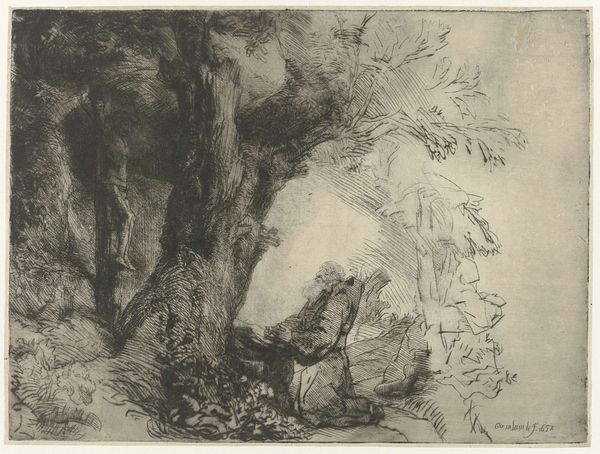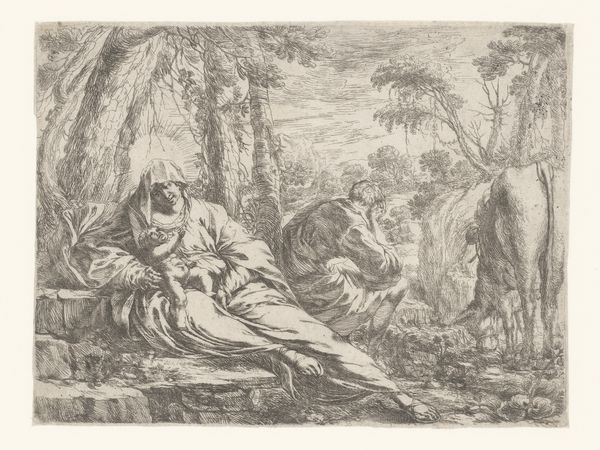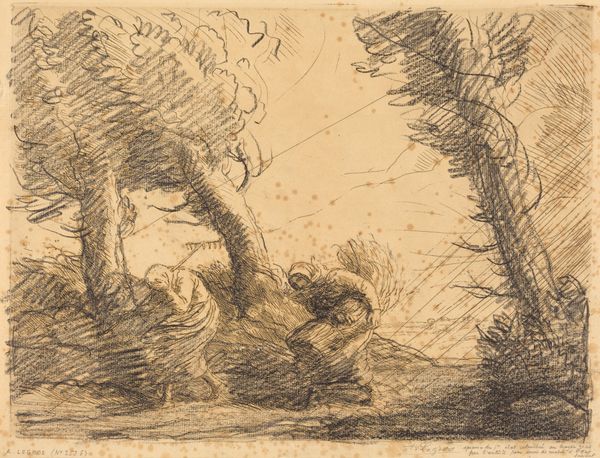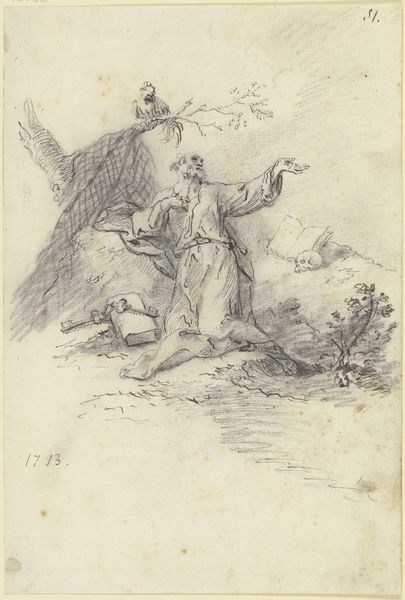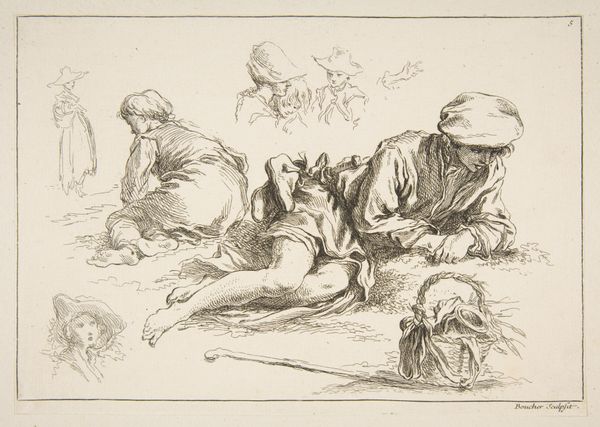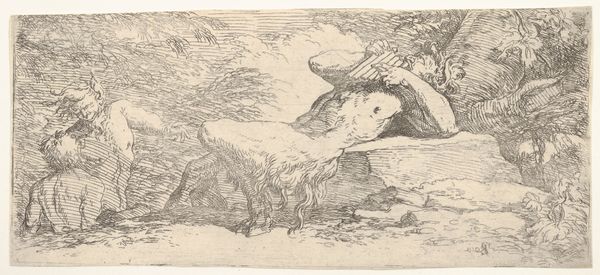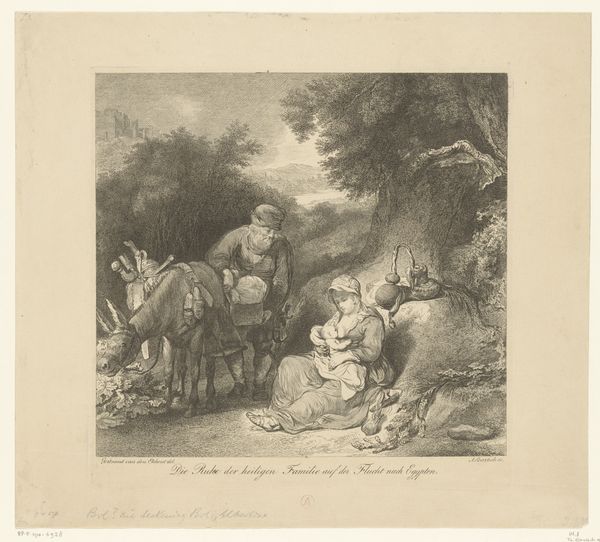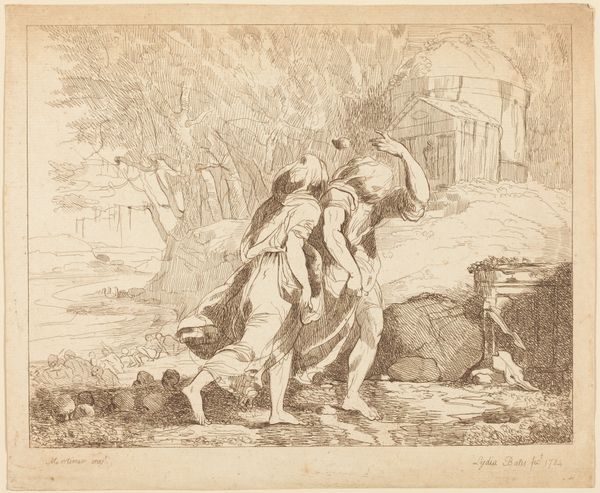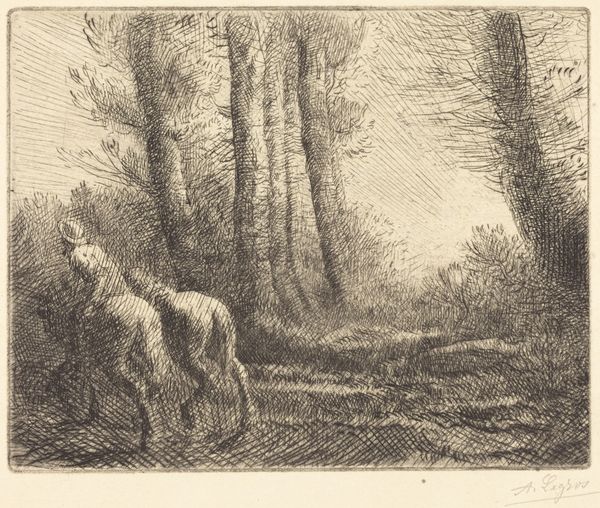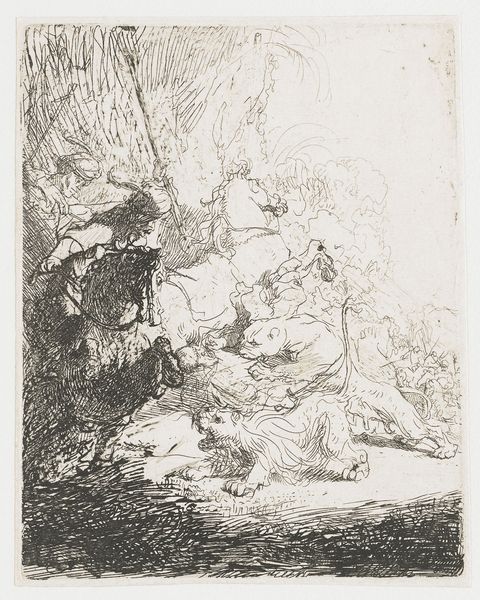
drawing, print, etching, ink
#
drawing
#
narrative-art
# print
#
etching
#
landscape
#
figuration
#
ink
#
realism
Copyright: National Gallery of Art: CC0 1.0
Editor: We’re looking at “Donkey Upset by Storm,” an etching by Alphonse Legros. The distressed figures really strike me. What compositional elements do you notice that contribute to the drama? Curator: Observe how Legros masterfully employs line. Notice the chaotic hatching in the sky mimicking a turbulent storm, which contrasts starkly with the relative calm of the earth beneath. It's this tension, this visual dichotomy, that animates the scene. Do you see how the figures lean, almost collapsing, into the storm's force? Editor: Yes, the diagonal lines really emphasize that sense of collapse and vulnerability. How does that affect our interpretation of the subject matter? Curator: The strategic use of line guides our eye, creating movement and rhythm within the frame. The donkey, grounded and supine, serves as a visual anchor amidst the surrounding chaos. The woman flailing against the winds is positioned adjacent to the tree, while the man bows over the downed donkey. Does that give the image more visual weight? Editor: Absolutely, it's like he is at the center. Curator: Furthermore, consider the tonal variations Legros achieves through etching. The stark contrast between light and shadow amplifies the drama, heightening the sense of unease and imminent danger. It's the artist’s emphasis of light breaking through heavy sky using horizontal versus dynamic diagonal markings which drives the picture. It almost looks like there are spotlights on the humans. Editor: It’s interesting to focus solely on these elements; the etching marks and dramatic forms overshadow any potential narrative, and they are captivating. Curator: Precisely! It’s the power of pure form, where the artwork transcends mere representation to evoke a visceral response in the viewer.
Comments
No comments
Be the first to comment and join the conversation on the ultimate creative platform.
